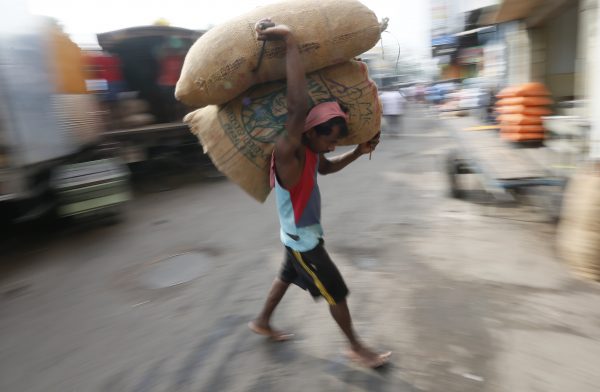, with much better relations with India and the West. But the government’s Achilles heel is the economy. Here expectations have been dashed. What has gone wrong?
The present government has continued a post-independence pattern of macroeconomic incontinence. Take fiscal policy. Last year saw two disastrous budgets. There were unaffordable public-sector salary hikes. New tax concessions further eroded the revenue base. The budget deficit increased to 7.4 per cent, and tax revenue declined to 12 per cent of GDP in 2015. This increased reliance on debt, particularly foreign commercial borrowing, which rose to 44 per cent of GDP in 2015 — over half of government debt. This year the government negotiated an extended fund facility of US$1.5 billion with the IMF, providing extra breathing space for fiscal reforms.
Monetary policy has added fuel to the fiscal fire. The central bank printed money feverishly and kept interest rates low to finance government debt and prevent an economic slowdown. But the result was a credit bubble, pressure on the rupee and a deteriorating balance of payments. Now Sri Lanka has a new, eminently qualified governor of the central bank, Dr Indrajit Coomaraswamy. His challenge is to restore monetary stability and regain the independence and integrity of the central bank.
No serious reforms have happened in other areas of economic policy. Overall, it is clear this government came to power unexpectedly and unprepared. It had no concrete economic plan.
The government needs a credible economic plan for the rest of this parliamentary term, which concludes in 2020. As part of this plan, it should prioritise four things.
First, ‘do no harm’ must be the cardinal maxim for policy. In other words: no more big public-sector salary hikes; no more price controls; and no more ad-hoc taxes.
Second, the government must deliver tax reform. The objective should be to get revenue up to 15–20 per cent of GDP, while concurrently increasing incentives to save, invest, create jobs and boost productivity. The keyword should be ‘simplification’. There should be clean, simple rates for value-added taxes and direct (personal and corporate) income taxes, with as few exemptions as possible. Additional, ad-hoc taxes should be phased out. As much of the system as possible should be put online and made non-discretionary.
Third, Sri Lanka needs to cut red tape. Business regulations should be simplified radically. The most obvious reform is to cut the number of approvals for investment and project permits to one or two. These approvals should be processed by a genuine one-stop-shop rather than a multitude of ministries, and despatched in a matter of days and weeks rather than months and years. Digitisation and reductions in bureaucratic discretion are the way forward.
And, fourth, Sri Lanka needs a new trade policy to reverse the decade of de-liberalisation under the previous government. Trade has shrunk to under 50 per cent of GDP, and exports to 21 per cent of GDP. The export basket is narrow in terms of goods (mostly garments and plantation crops) and destination markets (mainly the EU and United States). Trade and FDI need to increase significantly and rapidly, in both quantity and quality, to deliver a national productivity boost.
The government should draw up a trade and FDI bill — a blueprint for unilateral trade and investment liberalisation. It should have an accompanying strategy for trade negotiations. It should conclude trade deals with India, China and Singapore. And it should aim for deep and comprehensive free trade agreements with Sri Lanka’s main export markets — the European Union, the United Kingdom (post Brexit) and the United States. For the latter, the best option would be to apply to join the Trans-Pacific Partnership.
Various political factors have combined to produce the current decision-making stasis. These must change to implement reform.
The government needs to appoint more suitable candidates at senior levels. It needs an injection of young blood — of incorrupt, competent professionals. And an intra-governmental system should be put in place to drive economic reforms from formulation to implementation. The present situation is one of ad-hoc decision-making.
Civil service reform should also be on the agenda. The civil service’s decades long degeneration accelerated under the last government. The civil service is no longer capable of implementing reforms effectively, but it is big enough to delay or block reforms that threaten its interests. Market reforms should also be retailed to ordinary Sri Lankans outside the Colombo elite bubble. This is where collaboration between the President and Prime Minister and a national unity government — however unwieldy — should come in handy.
Sri Lanka’s once-in-a-generation opportunity is in danger of being squandered. The window is still open — just. But it might close sooner than a complacent, out-of-touch Colombo elite thinks. This is why the economic stakes are so high, and why market reforms are so urgent.
Razeen Sally is Chairman of the Institute of Policy Studies, Sri Lanka, and Associate Professor, Lee Kuan Yew School of Public Policy, National University of Singapore.
A longer version of this article was first published here, in Daily FT.

